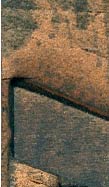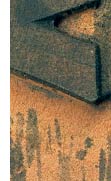|
|
||||||||||||||||||||
| introduction articles/lectures web typography style and design functions of type usability interaction composition conclusion bibliography links |
There are 7 graphic styles* which can be differentiated on the Internet today. 1. Conventional or early webstyle (info sites, mainly typographic) The way these sites look is determined by the the users browser. W3C 2. Digital modernism (info sites, mainly typographic) Usability is the most important aspect of a 'digital modernistic' site. Yahoo 3. Grunge (entertainment sites, typographic) David Carson like typographic experiments Juxt Interactive 4. Typographic minimalism (info/ent. sites, mainly typographic) Sites that focus on the balance between subtle typography and interactivity. :TDR 5. 3D and isometric visualisation (entertainment sites, little type) Isometric 3D is an efficient way of visualising community spaces. Dubit 6. Cartoon/illustration (info sites, little type) Sites that tell a story or provide a game environment. Joe Cartoon 7. Eclectic postmodernism (ent. sites, small typography) A very populair style which layers type and other imagery on top of eachother. Bearskinrug |
 |
||||||||||||||||||
 |
* These webstyles are based on the traditional (typo)graphic styles |
|||||||||||||||||||
© Copyright 2001 - 2005, Directiondesign - Jurriaan Schalken (info@directiondesign.nl)